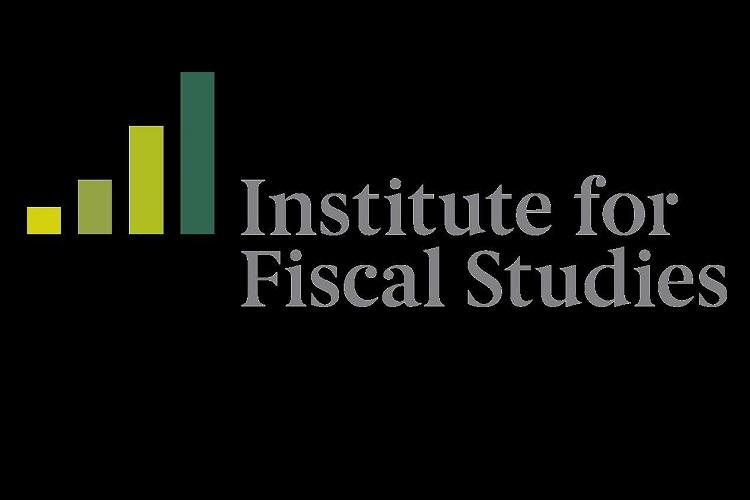Creative arts degrees cost taxpayers 30% more than engineering degrees

The current system of funding undergraduate education means that costs to government are highest for subjects where graduates earn the least, and lowest for subjects where they earn the most, is the findings of the report ‘Where is the money going? Estimating government spending on different university degrees’ published today (6 Mar) by Jack Britton, Laura van der Erve, Neil Shephard and Chris Belfield, Institute for Fiscal Studies (IFS).
This is an unintended consequence of the English loan-based system, which costs taxpayers about £9 billion per cohort of undergraduate students, and in which only the highest-earning graduates pay most of their student loans back and low-earning graduates do not.
This means that taxpayers provide bigger subsidies to students who study arts and humanities – which typically result in relatively low earnings – than to those who study many science and engineering courses.
For example, on average creative arts degrees (studied by 37,000 students per year) are about 30% more expensive for the taxpayer than are engineering degrees. The reverse would be true if we still had the funding system that was in place 20 years ago.
These are among the results of new analysis which for the first time estimates the distribution of government spending, taking account of grants and unrepaid student loans, across subjects studied and institutions attended.
It is important to understand these are not estimates of returns to the different degrees: some subjects and institutions may therefore receive large loan subsidies even if they are positively impacting the earnings of their graduates, because they happen to attract students that have very low earnings potential.
Since the final costs will depend on actual earnings over the next 30 years, there is inevitably uncertainty about these estimates. But they are based on new administrative data giving precise details on actual earnings of previous cohorts of graduates and are likely to be the best estimates possible at the current time.
Our main findings include:
- There is considerable variation in loan subsidies by subject. For many subjects the government expects to write off around 60% of the loans it issues. For economics, however, write-offs are likely to be just a quarter of loans issued and for medicine and dentistry only a fifth. For creative arts, write offs are likely to amount to around three quarters of the value of loans issued. This variation in loan subsidies is primarily driven by differences in repayments rather than differences in loan sizes.
- The highest government spend typically goes towards graduates of the subjects with the highest loan write-offs, as loan write-offs account for more than 90% of total government spending on undergraduate HE. The cost to government is around £11,000 per economics student who borrows from the government to help with tuition fees and maintenance loans, while it is more than £35,000 per creative arts borrower. Medicine is an exception – despite its graduates repaying most of their loans, it is one of the highest-cost subjects, at £45,000 per borrower, due to large teaching grants.
- The government cost per student also varies by institution type. While total funding received by universities is extremely similar, the government contribution per student at each institution varies massively. Each borrower at Russell Group institutions – where graduates are typically high earning – costs the government less than £25,000. Costs are more than 20% higher for ‘post-1992’ and ‘other’ universities, where the average graduate earns much less.
- The reforms since 2011 have shifted the allocation of spending from high-cost degrees to those with the lowest graduate earnings. Spending per borrower on students doing economics and engineering degrees is likely to have fallen by around £8,000 as a result of reforms between 2011 and 2017, while increasing by more than £6,000 for creative arts degrees. Similarly, spending on borrowers at Russell Group universities – which tend to offer more high-cost subjects – has fallen by £6,000, while increasing by more than £2,000 for borrowers at ‘post-1992’ and ‘other’ universities.
- Consequently, the share of total government spending on science, technology, engineering and maths (STEM) courses has fallen from 57% to 48% as a result of policy changes between 1999 and 2017. If we had the 1999 system in place today, only 30% of spending would go to arts and humanities (AH) subjects. Under today’s system, this figure is 37%, and roughly 13% of the £9 billion the government spends on HE per cohort now goes to creative arts courses.
The report also considers what these figures mean for policy options:
- Lowering the fee cap from £9,250 to £6,000 could give the government more flexibility to target spending. This would free up around £7,000 per borrower to be targeted more directly towards priority areas, with the savings coming mostly from subjects that have low-earning graduates. Any cuts to tuition fees would, however, benefit the highest-earning graduates most.
- Variable fee caps would be another option to regain flexibility in targeting spending. Reducing the fee cap for AH subjects to £6,000 would reverse some of the increase in funding these subjects have seen over the last couple of decades. This policy may, however, increase demand for those courses, or perversely reduce funding for STEM achieved through within-university cross-subsidisation.
- One policy that might resolve some of these issues would be for government to charge universities a fee for charging tuition fees above a certain level in areas where it wants to reduce spending. A ‘negative teaching grant’ of £3,000 for AH courses would mean government allocates less money to those courses, without affecting the fees students face or their repayments. Savings could be targeted towards priority areas. However, the impact on, and responses of, universities are unpredictable.
Laura van der Erve, Research Economist at IFS and an author of the report, said:
‘Reforms to the higher education system over the past 20 years have meant that the strongest driver of taxpayer spending on each subject and institution is the earnings of their graduates, with most of the government subsidy to higher education mechanically accruing to low-earning graduates. While some level of subsidisation is a desirable feature of the system, there are serious doubts about whether the current distribution of spending aligns with the degrees that are most beneficial to society.’
Jack Britton, Senior Research Economist at IFS and an author of the report, said:
‘This research helps us to better understand the key implications of the 2012 tuition fee reforms: while university funding went up and graduate repayments became much more progressive, the government lost control of where its own spending was targeted. This was exacerbated by the fact that almost all courses charged the maximum tuition fees. We now see that of the £9 billion that the government spends on undergraduate higher education each year, more than £1 billion is on creative arts courses alone.’
Key findings
Our best estimates suggest considerable variation in loan subsidies by subject area. The government only expects to write off around a quarter of the value of the loans it issues to economists, while for many subjects the expected loan subsidy is in excess of 60%. For creative arts, it is around three-quarters. The subject area with the lowest loan subsidy is medicine & dentistry, with around a fifth of loans written off.
Differences in loan write-offs across subjects largely reflect differences in loan repayments, rather than differences in the size of the loans. The size of the loans students are eligible for does not depend specifically on the subject they study, but rather on the length of their course and their parental income. In fact, annual tuition fees are the same (£9,250 per year) for almost all students, regardless of course or institution. Tuition and maintenance debts are treated as indistinguishable by government (i.e. one is not repaid before the other), so our estimates therefore include write-offs from both. This is appropriate since we think of government contributions to living costs during study as a cost of funding HE.
The subjects with the highest loan write-offs typically receive the highest government spend per student. The cost to government is around £11,000 per economics student taking out full tuition fee and living cost loans. The equivalent figure for an engineering student is roughly £27,000, while for a creative arts student it is around £37,000. Despite having a low loan subsidy, medicine & dentistry is still one of the higher-cost degrees to government, at around £45,000 per degree, due to large teaching grants.
The government cost per student also varies a lot by institution type. Because students from Russell Group universities typically have relatively high earnings, the government cost per borrower at a Russell Group university is around £24,000, while for ‘post-1992’ and ‘other’ universities the cost is around £31,000. Again, this is the total cost to government, including its contributions towards living costs, and does not include the contributions of graduates (in fact, total funding received is extremely similar across different universities).
The distribution of spending by subject and institution has been hugely affected by reforms since 2011. For example, the cost to government of providing engineering degrees decreased by around £9,000 per student during this period, while the equivalent figure for creative arts degrees increased by more than £6,000. The government now spends over 30% more per creative arts degree than it does per engineering degree, whereas if the 2011 system were still in place today, it would spend nearly 20% less per degree on creative arts than engineering. Similarly, government spending per borrower at Russell Group universities is around £6,000 lower under the 2017 system than under the 2011 system, while it increased for the ‘post-1992’ and ‘other’ university groups by more than £2,000.
Consequently, the distribution of total government spending on HE is very different today from what it would have been with no reforms. Holding the set of students and their earnings fixed, if the 1999 system were still in place today, around 57% of government spending on undergraduate HE – teaching grants to universities, grants to students and unrepaid fee/maintenance loans – would be going towards students studying science, technology, engineering and maths (STEM) courses, with 30% going towards arts and humanities (AH) students. Under the current system, 48% goes towards STEM students, with 37% going to AH students.
The recent ONS review on the accounting treatment of student loans dramatically affects the impact of different subject areas on the deficit. Under the old accounting treatment, grant spending today counted towards the deficit today, while write-offs from loans issued today only affected the deficit 30 years down the line. Under the new system, expected write-offs from loans issued today count towards the deficit today. Consequently, many subject areas go from adding almost nothing to the deficit today under the old system to adding significant sums to it under the new one. For example, we estimate the deficit impact per cohort of creative arts students will increase from around £25 million to around £1.2 billion as a result of the change. These changes could dramatically increase scrutiny from policymakers concerned about deficit spending today.
Combined with the design of the finance system, the recent removal of controls on student numbers exposes the government to risk of spiralling costs. Until 2014, there were tight restrictions on student numbers to help control costs. Under the current system, total spending and the distribution of that spending both depend on student choices: large increases in the number of students doing degrees that currently result in lower earnings could dramatically increase government costs, especially given recent increases in the costs to government associated with lowerearning subjects.
Lowering the fee cap from £9,250 to £6,000 could give the government more flexibility to target spending and reduce exposure to risk. This change would save the government around £7,000 per borrower due to lower loan write-offs, with most of the savings coming from lower-earning subjects. The money saved from lower loan write-offs would free up funds for the government to target other priority areas more directly – for example, if all of the government savings were put into grants for STEM courses (keeping total long-run government spending constant), the share of government spending on STEM would increase from 48% to 62%. University funding overall would drop under this policy due to lower contributions from higher earning graduates that are not fully replaced by increased grants.
Variable fee caps could also allow the government to regain flexibility in where it targets spending – but there are significant caveats. Reducing the fee cap for non-STEM subjects to £6,000 per year would reverse part of the funding increase that AH subjects have seen in the last 20 years and would reduce the government exposure to big changes in student choices. But it might increase demand for non-STEM courses, or perversely lead to a reduction in funding for STEM due to subsequent reductions in within-university cross-subsidisation.
The authors thank the Nuffield Foundation, Universities UK, the British Academy (Postdoctoral Fellowship, grant reference PF150081) and the Economic and Social Research Council (ESRC)’s Centre for the Microeconomic Analysis of Public Policy at IFS (grant reference ES/M010147/1) for financial support.











Responses